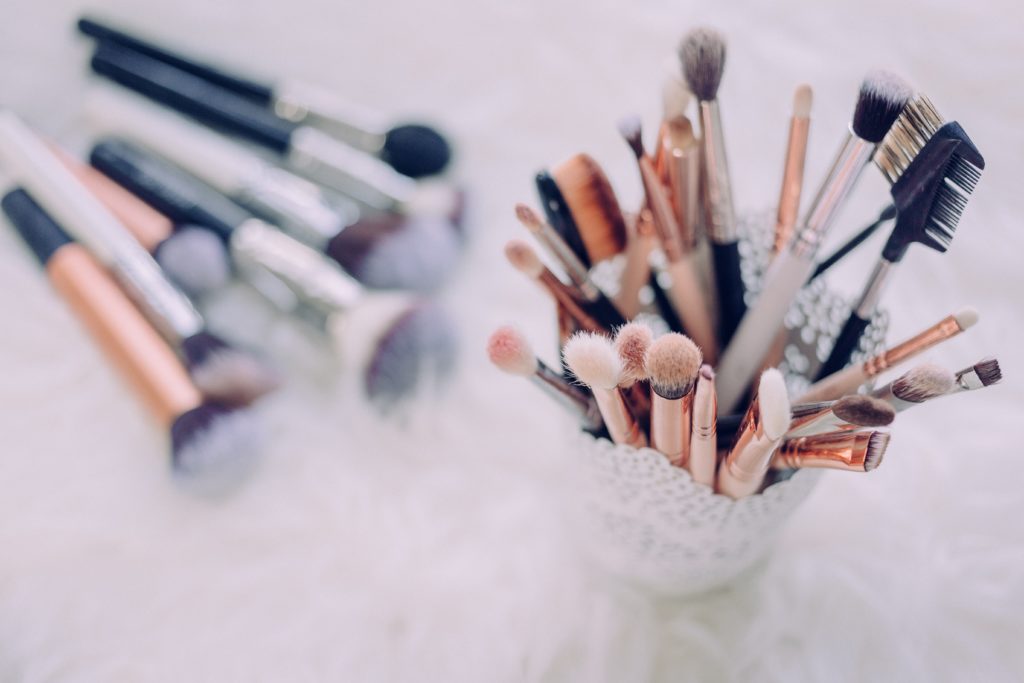Are you a beauty enthusiast looking for a creative outlet to express your passion?
Starting a beauty blog may be just the thing you need! Not only does it allow you to share your knowledge and experience with others, but it also gives you the opportunity to connect with like-minded individuals from around the world.
But where do you start?
With so many beauty blogs out there, it can be overwhelming to figure out how to make yours stand out. Don’t worry.
In this article, we’ll guide you through the steps to get started on your own beauty blog, from choosing your niche to promoting your content.
1. Choosing a Niche
Choosing a niche is an important step when starting a beauty blog. It involves identifying your target audience, determining your area of expertise, and finding your unique selling point.
Define Your Target Audience
Who do you want to reach with your content? Are you targeting women, men, or both? What age group are you focusing on? Are they interested in makeup, skincare, haircare, or a combination of these? By answering these questions, you can narrow down your niche and create content that appeals to your specific audience.
Determine Your Area of Expertise
What do you have a passion for, and what are you knowledgeable about? Do you have experience in makeup artistry, esthetics, or hairstyling? By focusing on a specific area, you can establish yourself as an expert in your field and build a loyal following.
Find Your Unique Selling Point
What sets you apart from other beauty bloggers in your niche? It could be your writing style, your personality, or the way you present your content. By differentiating yourself from others, you can attract a dedicated audience interested in what you have to say.
Creating a Website
Creating a website is an essential step for businesses, individuals, and organizations to establish their online presence and reach a wider audience. In today’s digital world, having a website is necessary to provide information about your products, services, or message to potential customers or visitors. Here are some key steps to follow when creating a website:
Choosing a Domain Name
A domain name is a unique address that people will use to access your website. Choose a name that is memorable, easy to spell, and reflects your brand or business.
Selecting a Hosting Provider
A hosting provider is a company that stores your website files on its servers and makes them accessible to the internet. Choose a reputable hosting provider that can offer reliable and secure services.
Designing Your Website
Several options to design your website include hiring a professional web designer or using website builders such as WordPress, Wix, or Squarespace. Choose a visually appealing, user-friendly, and responsive design, meaning it can adjust to different screen sizes and devices.
2. Writing Quality Content

When it comes to starting and maintaining a successful beauty blog, writing quality content is crucial. Quality content helps establish your credibility and expertise within your niche and attracts and retains your audience. Here are some tips on how to write quality content for your beauty blog:
Researching Topics
Before writing, research and stay up-to-date on industry trends, new products, and techniques. Make sure to fact-check your information and provide credible sources when necessary.
Writing Attention-Grabbing Headlines
Your headline is the first thing that readers see and determines whether they click on your post or not. Make sure your headlines are catchy, clear, and accurately reflect the content of your post.
Creating Visually Appealing Content
Incorporate high-quality images, videos, and graphics that complement your writing and break up long bhair of text.
Use Engaging Language
Use language that is conversational, easy to understand, and relatable. Avoid using overly technical jargon that might alienate some readers.
Create Visually Appealing Content
Incorporate high-quality images, videos, and graphics that complement your writing and break up long bhair of text.
Edit and Proofread
Before publishing your post, make sure to edit and proofread your work for grammar, spelling, and punctuation errors.
Provide Value
Your content should provide value to your readers. This could include tips, tutorials, reviews, or product recommendations. Make sure your content is informative, helpful, and actionable.
3. Promoting Your Blog

Promoting your blog is essential for attracting readers and building a community of followers. Here are some effective ways to promote your blog:
Building a Social Media Presence
Create accounts on platforms such as Facebook, Twitter, Instagram, and Pinterest, and share your blog posts on those platforms. Engage with your followers, post regularly, and use relevant hashtags to increase your visibility.
Networking With Other Bloggers
Reach out to other bloggers in your niche, comment on their posts, and collaborate on content. Building relationships with other bloggers can help you reach a wider audience and gain new followers.
Collaborating With Brands
Reach out to brands that align with your niche and offer to collaborate on content or sponsored posts. This can help you gain exposure to a wider audience and monetize your blog.
Utilize Email Marketing
Collect email addresses from your readers and send them regular newsletters with links to your latest blog posts. This can help keep your readers engaged and build a loyal following.
Use SEO Tactics
Optimize your blog posts for search engines by including relevant keywords in your headlines, meta descriptions, and content. This can help your blog rank higher in search results and attract more organic traffic.
Guest Post on Other Websites
Write guest posts for other websites in your niche and include a link to your blog in your author bio. This can help you gain exposure to new readers and attract more traffic to your blog.
4. Monetizing Your Blog
Monetizing your blog can be an excellent way to turn your passion for blogging into a profitable venture. There are several ways to monetize your blog, and each method has its own advantages and disadvantages. We will discuss some of the most common ways to monetize a blog and provide tips on how to get started.
Understanding Affiliate Marketing
Affiliate marketing involves promoting products or services on your blog and earning a commission for every sale made through your unique affiliate link. To succeed with affiliate marketing, choosing products or services relevant to your niche and audience is essential. You can promote affiliate products through blog posts, reviews, or banner ads.
Displaying Ads on Your Website
Display advertising involves placing ads on your blog, and you get paid each time a visitor clicks on the ad. The most common types of display ads are Google AdSense and Media.net. To succeed with display advertising, it’s essential to have a significant amount of traffic coming to your blog.
Creating Sponsored Content
Sponsored content involves working with a brand to create content that promotes its products or services. Brands will pay bloggers to create sponsored blog posts, reviews, or social media posts. To succeed with sponsored content, it’s essential to be transparent with your readers and only work with brands that align with your values.
Digital Products
Digital products such as e-books, courses, and printables can be lucrative for monetizing your blog. To succeed with digital products, it’s essential to create high-quality content that your audience finds valuable.
Coaching or Consulting Services
If you have expertise in your niche, you can offer coaching or consulting services to your readers. This can include one-on-one coaching sessions, group coaching, or consulting services. To succeed with coaching or consulting services, building trust with your audience and demonstrating your expertise is essential.
5. Maintaining Your Blog

Maintaining your blog is crucial for its success and growth. Once you’ve started your blog, it’s important to stay consistent with your posting schedule and engage with your audience. Here are some tips for maintaining your blog:
Staying Consistent With Posting
One of the keys to maintaining your blog is staying consistent with your posting schedule. Decide on a frequency that works for you, whether it’s daily, weekly, or biweekly, and stick to it. Consistency builds trust with your audience and can help you establish a loyal following.
Engaging With Your Audience
Building a community around your blog is essential for its growth. Responding to comments and messages, asking for feedback, and encouraging discussion can help you connect with your readers and build a loyal following. You can also consider hosting giveaways, creating interactive content, and collaborating with other bloggers to engage your audience.
Updating and Optimizing Your Website
Regularly updating and optimizing your website is also important for maintaining your blog. This includes keeping your design up-to-date, checking for broken links, and optimizing your content for search engines. Regularly updating your website can also help you stay relevant and increase your visibility.
Conclusion
Starting a beauty blog can be an exciting and fulfilling journey. By following the steps outlined in this article, you can create a successful blog that engages your audience, showcases your expertise, and even generates income. Remember to stay true to your niche, consistently produce quality content, and connect with your audience.
With hard work and dedication, your beauty blog can become a go-to resource for readers looking to enhance their beauty routine or explore new products. So, don’t hesitate to take action today and start your beauty blogging journey!